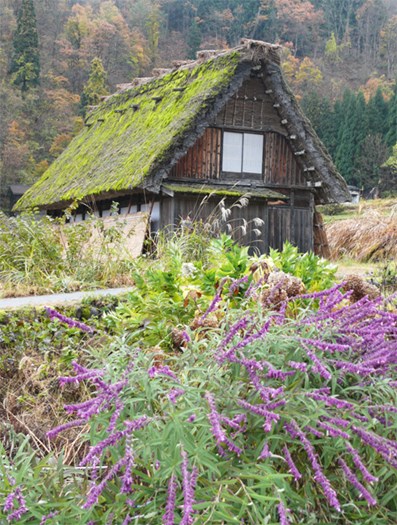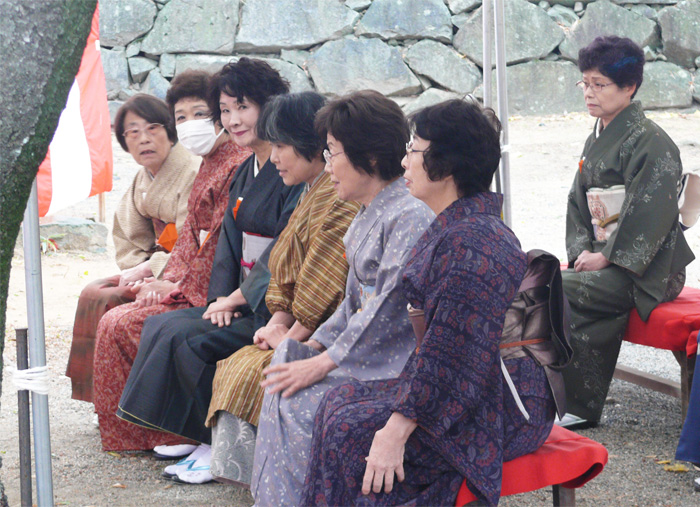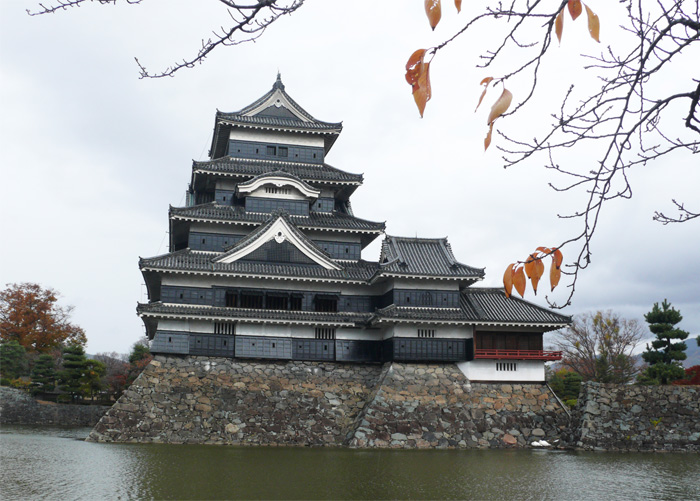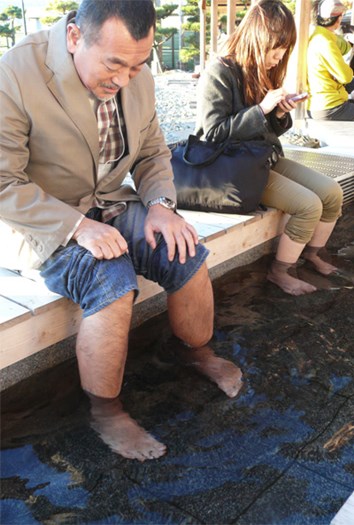KANAZAWA, JAPAN – It’s a bright sun-drenched day when our motor coach enters the abyss of a volcanic mountain tunnel and quickly our vision is drawn to a tiny speck of light in the distance. As we race through the tunnel, the dot gets larger and soon we can make out a familiar image taking shape in the yawning opening. A gasp erupts from the seats when passengers realize what lies ahead is iconic Mount Fuji.
A few minutes later, while exiting the long tunnel, we’re blinded by a bright light — the sun is bouncing off a frosting of fresh snow that covers Mt. Fuji’s domed peak. The snow, which spreads halfway down the mountain, looks like melting ice cream.
We’re actually looking at a side of Mt. Fuji not many visitors to Japan get to see — her north face. The great national symbol may be the most photographed landmark in all Japan but the majority of pictures taken are of the south face — the side that looks out on the town of Hakone, just outside Tokyo and which is much easier for tourists to reach from the capital.
“Mount Fuji’s north face is her most beautiful side because it looks out on traditional Japan,” gushes Akiko Shimada, the guide leading us on a four-day expedition through the belly of Japan — a route directly west of Tokyo that’s not normally included in most tourist itineraries.
Up ahead, Akiko says we’ll visit historic cities like Matsumoto, Takayama and Kanazawa where the ancient traditions of Japan remain a part of everyday life; and travel on a highway (Route 158) that cuts through a remarkable national forest teaming with waterfalls, long mountain tunnels, playful white-faced monkeys, emerald green lakes and steaming hot springs.
But first, Akiko wants to impress us with what lies in the shadow of Mr. Fuji — Japan’s Katsunama wine region in Yamanashi Prefecture, and a nearby spa town where hot springs draw people from big cities like Tokyo and Yokohama on weekends.
Yes, Japan does have a wine region which produces flavourful vintages that are sweet to the taste — the whites border on Riesling — and which have become a major economic contributor to the prefecture, where wineries began springing up in the 1940s. Wine is also challenging sake now as the national drink.
The vineyards stretch out for as far as the eye can see in a valley surrounded by what Akiko calls “Japan’s Northern Alps,” a range of jagged black volcanic peaks that are truly stunning.
During our visit to one of the region’s notable wineries, the Chateau Katsunama, we learn that grape-growing in Japan actually started in 718 AD and that Jesuit missionaries who arrived in the 16th century planted a few vines of their own.


Above: You find ancient homes and ancient traditions on the other side of Mt. Fuji.
This valley, where the rich volcanic soil is perfect for growing fruit, also produces an abundance of peaches and plums for Japanese tables.
Later, we drive to the Isawa Spa in the quaint valley town of Iwate where we enjoy lunch followed by a quick dip in a hot spring — a byproduct of the volcanic activity that has consumed this area throughout history.
The mineral-rich water leaves our skin feeling silky smooth and Akiko promises us a “foot bath” later on the shores of legendary Lake Suwa in the nearby town of Kami-Suwa, a vacation spot that’s home to a legendary geyser that gushes hot water on a regular basis so tourists can dip our toes in the pools it creates.


Left: Matsumoto City is home to one of Japan's largest castles. Left: People let small fish nibble at their feet.
After overnighting in Matsumoto City, we’re greeted by monsoon-like conditions on Day 2 but we brave the harsh weather because everyone is so excited to see Matsumoto Castle, considered one of Japan’s three “great” castles.
The stunning black exterior of the 400-year-old castle and its legendary Donjon Tower stand out against the grey sky and it’s quickly evident why this amazing structure is designated one of Japan’s “National Treasures.”
The castle, which dates back to the Eisho Period (1504-1521) and was completed in the late 16th century, is also known as “Crow Castle” because of its black exterior. And it’s one of the few structures of its kind to still have all its original stone and woodwork intact.
Up until Japan’s feudal system was abolished during the Meiji Restoration, 23 lords ruled over this impressive structure.
One of the great experiences on a trip through this part of Japan is the drive along national Highway 158. The road that links Matsumoto City with Takayama covers only 84 kilometres but takes almost three hours to complete because of the roller-coaster route it follows through some of the most visually stimulating scenery Japan has to offer.
The road dips into lush valleys where small towns have been shoehorned into the bosom of dramatic mountains. Then we climb high into mountains and through long tunnels — some stretching 11 kilometres — to reach lovely Takayama. We quickly discover Takayama is a mini-Kyoto whose Old Town was designated a UNESCO World Heritage Site because of its perfectly preserved buildings and streets. They date back to the Edo Period (1600-1868) when this was a wealthy merchant town.
On Sannomachi Street, new merchants have set up shop selling the beautiful landscape paintings this region of Japan inspires artists to produce. Sake breweries also dominate the street and most date back centuries; some even remain in the hands of the original families.
Near the Old Town we find a museum devoted entirely to the massive floats used in the three main festivals held here annually. The sheer size of the floats is mind-boggling.
Day 3 of our drive starts with a stop just outside Takayama at a World Heritage village called Shirakawago to see a collection of unique thatched-roof homes called Minka or Gassho Zukari.
The forward-leaning homes were built to withstand the high winter winds that whip through the valley where the town rests and, interestingly, we learn the homes were constructed without nails and are held together simply by ropes.
Later, we drive to the coastal city of Kanazawa, where the land drops off into the Sea of Japan.
Akiko tells us Kanazawa, which is bordered on one side by the sea and the other by the Japanese Alps, “is one of the overlooked jewels” of Japanese tourism.
Known as one of the best preserved Edo Period cities, Kanazawa is home to several important historical landmarks — the Nomura Samurai family house and the Higashi-Chayamachi, a traditional street where the geisha traditions are still carried out nightly.
Daylight is fading when we arrive at the impressive Nomura home in the city’s Nagamachi District, which was once overrun with similar estates that were provided to the samurai by the Maeda lords whom they served. The few that remain have been transformed into chic residents for the city’s elite.
We end the day with a walk through busy Omicho Market, where seafood plucked from the Sea of Japan a few hours earlier is sold to residents at some ridiculously high prices — one medium-sized crab sells for about $50 Cdn.
The best way to see what life was like here during the Edo Period is to visit Kanazawa’s Higashi Chaya-gai, an area lined with traditional teahouses where geishas still dance and sing nightly for patrons who can afford the $1,000 price tag that comes with the performance.
This is the largest of three such teahouse areas in this once feudal castle town where some of Japan’s hidden tourist treasures — among them Kakusenkei Gorge, Natadera Temple, Kanazawa Castle Park, stunning terraced rice paddies and the Mt. Hakusan ski resort — are located.
But the best attraction here, for my money, is Kenrokuen Garden, one of the three “Great Gardens” of Japan where we stroll in a tranquil setting featuring a variety of trees, many as old as the city itself, lovely ponds, idyllic waterfalls and a floral array that is quite stunning.
The gardens are spread over 25 glorious acres and have been flourishing since the 16th century.
From its elevated position, Kenrokuen affords visitors uninterrupted views of the city and its alpine and sea surroundings. The winding garden paths all converge at Kasumiga-ike pond, the largest on the grounds, which is a visual treat in spring (cherry blossoms) and fall (autumn colours).
Other stunning gathering areas in the gardens are the Uchihashi-tei teahouse, Kotoji lantern, Niji-bashi Bridge, the Karasaki pine tree, the oldest in the park, and Horai (turtle) island.
Our four-day tour of this unforgettable area of Japan is quickly coming to an end, but we all agree what lies on the opposite side of Mt. Fuji is something everyone who visits Japan must see because it’s an experience of a lifetime.